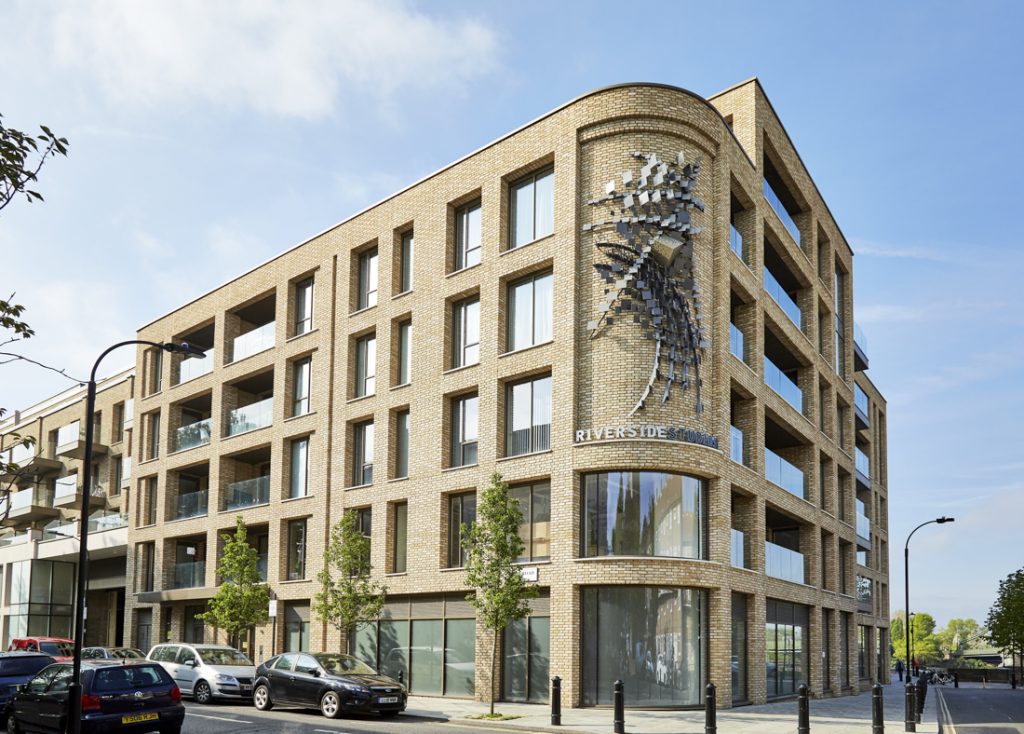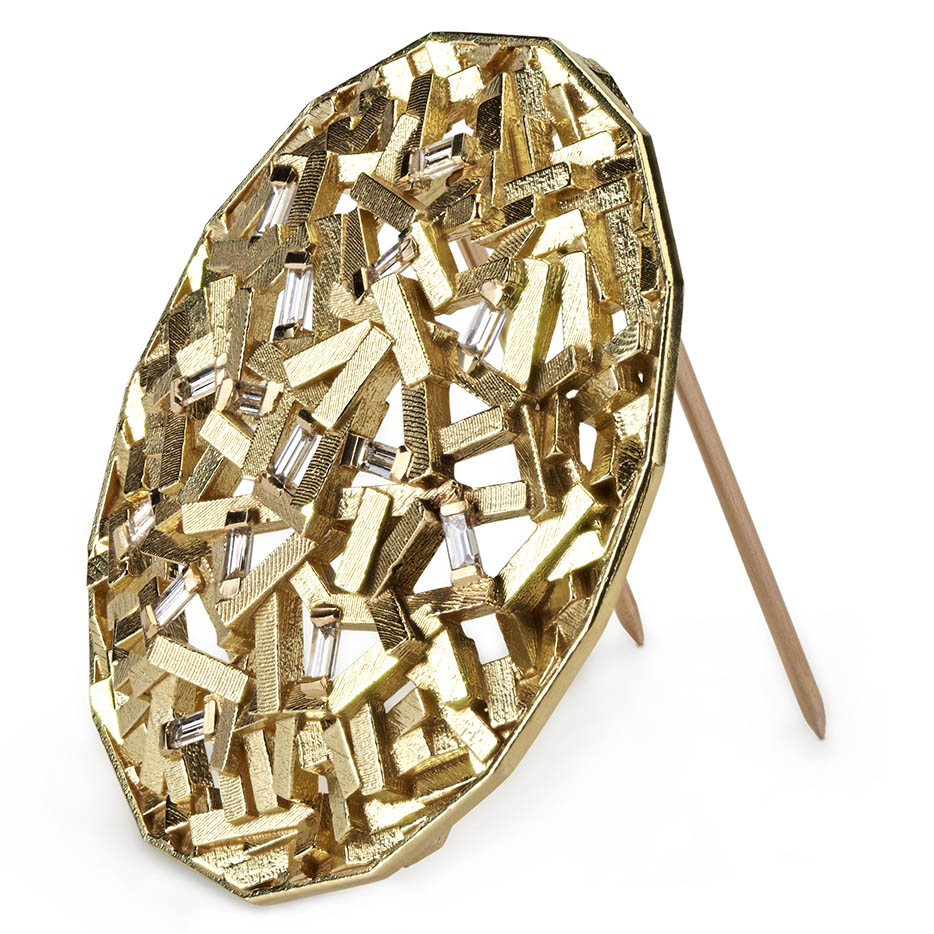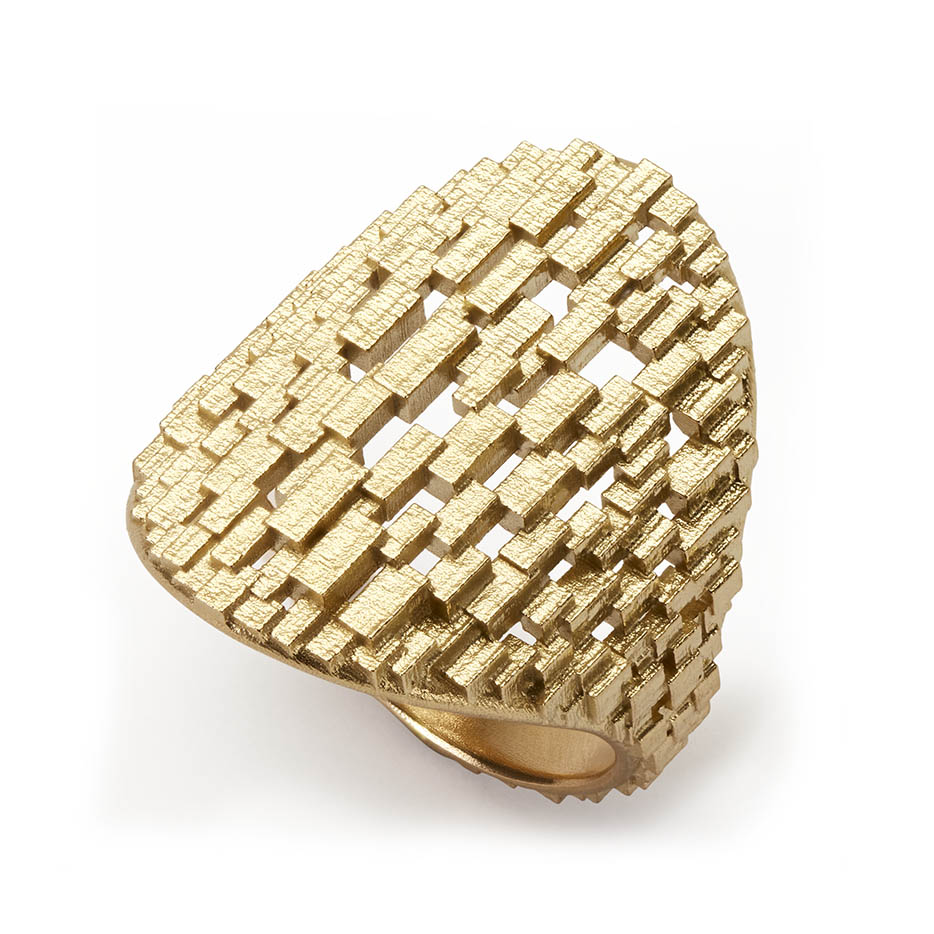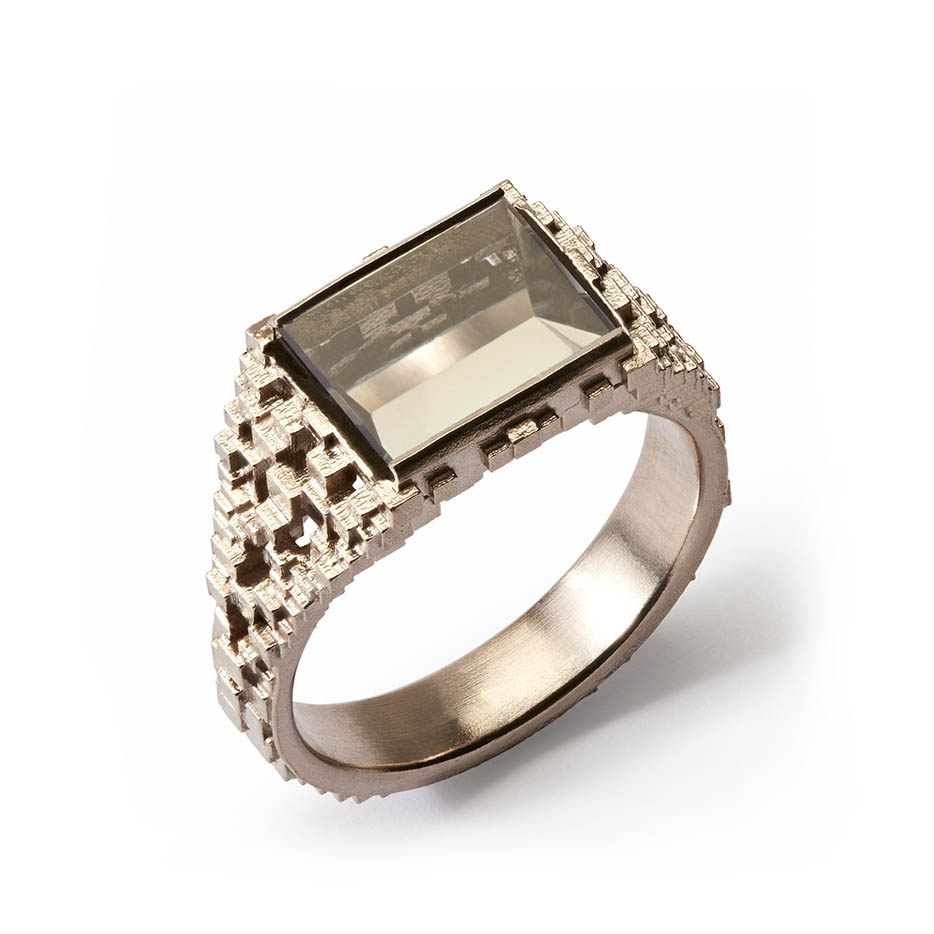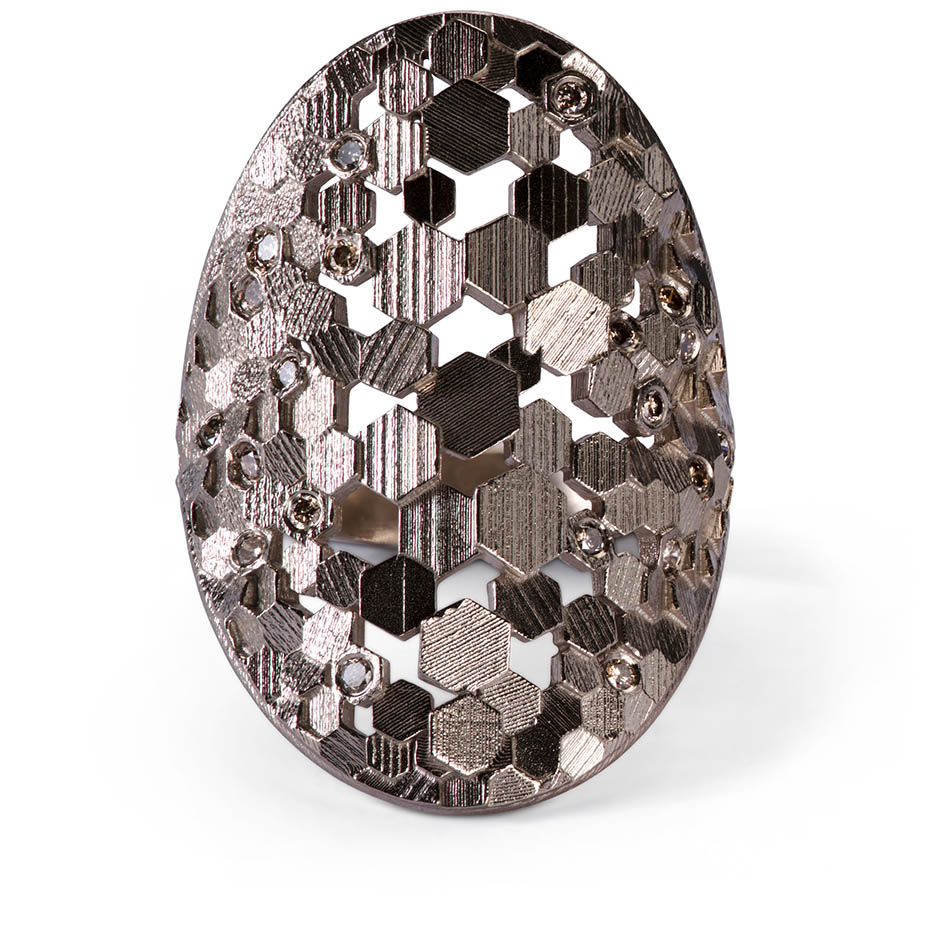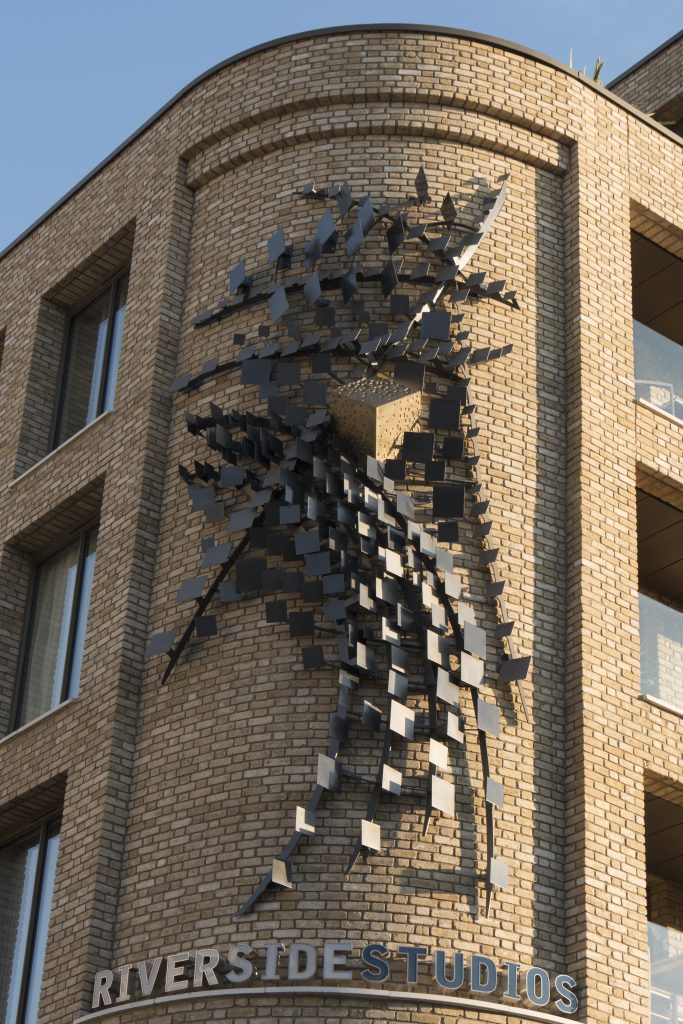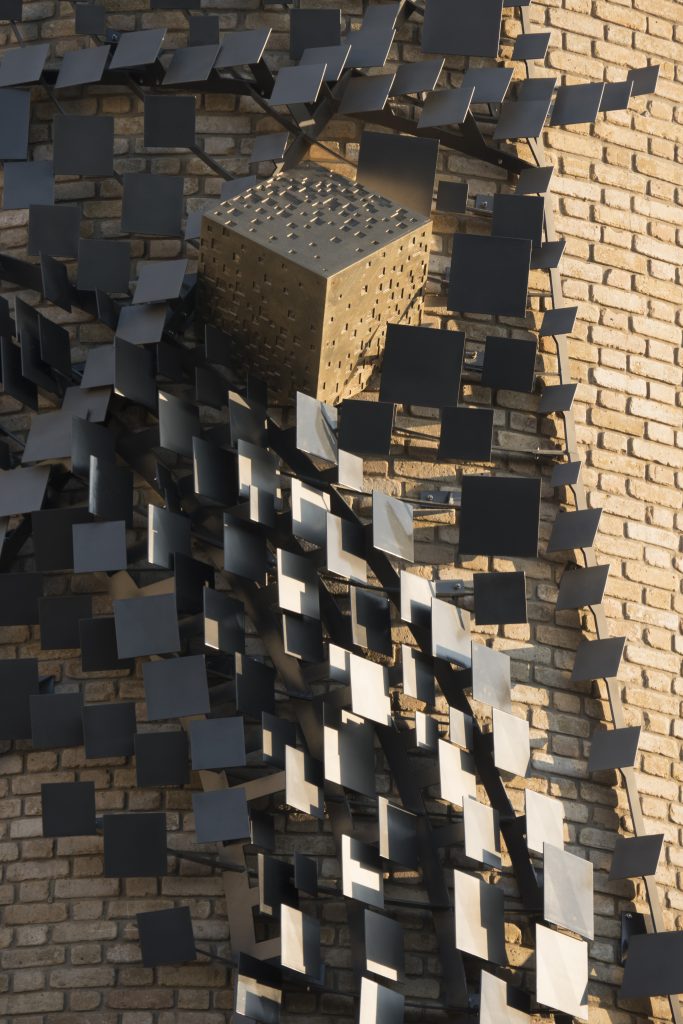Futurecity has worked in partnership with Mount Anvil to curate and deliver a series of public art commissions across three of their new developments in London: Untitled by fine jewellery designer Jo Hayes Ward at Queen’s Wharf (Riverside Studios), Column by artist-architect collective Studio Swine at the Lexicon, City Road, and Ecliptical Spheres by contemporary artist James Hopkins at Dollar Bay.
Read the interview with Jo Hayes Ward below.
FC: Can you tell us what it was like working at a different scale and in a new location / context for this commission?
JHW: The Queen’s Wharf commission was an exciting opportunity for me to work at a completely different scale and context to my fine jewellery practice.
My jewellery is often described as wearable sculpture; its architectural, sculptural influences are clear and so scaling up my designs to create a large scale sculpture for a building was a really wonderful fit for me – jewellery for buildings! My designs are uniquely metamorphic: their aesthetic hints at geological forms, multiple elements and textures combine to create truly original compositions – whether in minute or larger scale.
The ‘wow’ factor in my work is when light is reflected from the many elements within a composition, my jewellery shimmers when it’s worn. It was vital that I harnessed the way light is reflected from the sculpture in the same way. In order to achieve this, I design my work using computer-aided design (CAD) – drawing up 3D models in a virtual space. The concept of scale can be quite ambiguous when working in CAD so it was not a huge leap for me to scale up, though very thrilling to see it in situ and to marvel at the play of light on a much larger scale than my delicate jewellery.
FC: How do the materials / fabrication methodologies that you used in this commission compare to your usual practice?
JHW: The sculpture is largely made from carbon steel with a big gold block (made of aluminium bronze) at its heart. Quite a departure from the precious metals I am used to working with, but having studied Metalwork for my BA I was quite at home.
I realised that because of the scale of the piece and the fact it was in the public domain I needed to draw on outside expertise for its production and installation – working with fabrication company Millimetre was a new but wonderful experience.
FC: Has your practice developed as a result of the commission?
JHW: Absolutely! The experience has taught me to stretch myself further, push the boundaries of my own capabilities. Exploring materials that would reflect the light dramatically but which could also be constructed safely at this scale was a fun challenge. My design concept and aesthetic remains the same but I’d love to explore new formats for my designs, it’s exciting to see where that will lead.
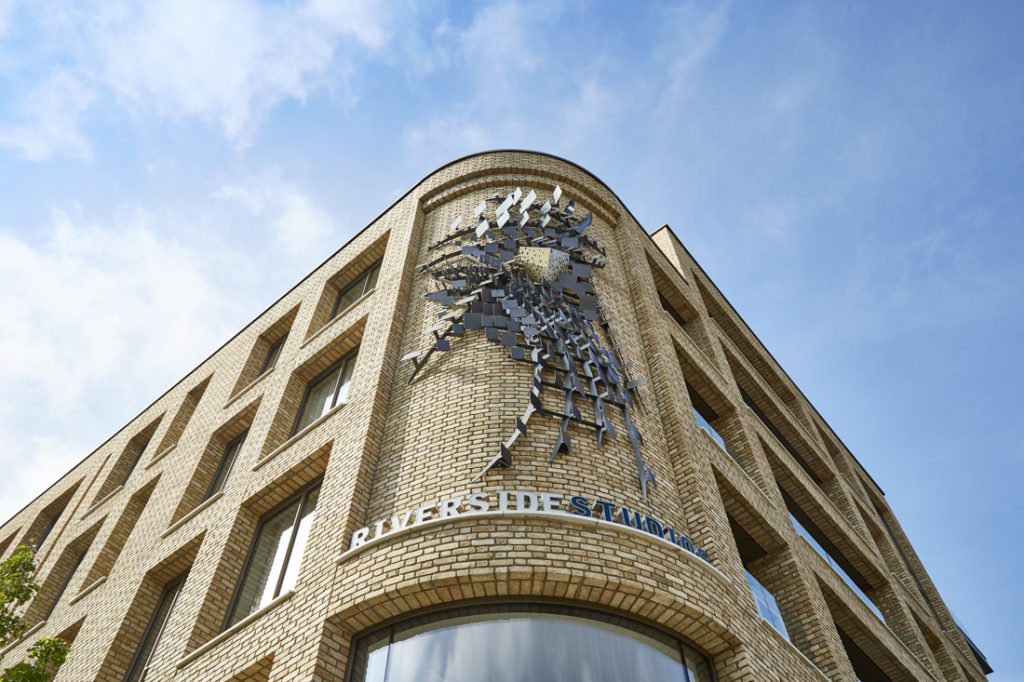
FC: Did the commission change your ideas of what you would like to focus on in for future work?
JHW: I have always wanted to make larger work so to make a piece of public art has been a dream come true. I am really keen to take on more projects outside of my jewellery practice, be they commission-based or collaborative – its exciting to move into new creative spheres!
FC: How do you hope this commission will contribute to public art in the city?
JHW: As a born-and-bred Londoner it was a huge honour to create a piece of public art for Londoners to enjoy, which celebrates an iconic London institution and the creativity that stems from it. London is rightly proud of its cultural heritage, I hope that in a small way my sculpture serves to enhance that.
FC: What can we expect from you in the future?
JHW: Designing is in my blood, whether fine jewellery or sculpture, there are so many ideas I can’t wait to create – watch this space!
